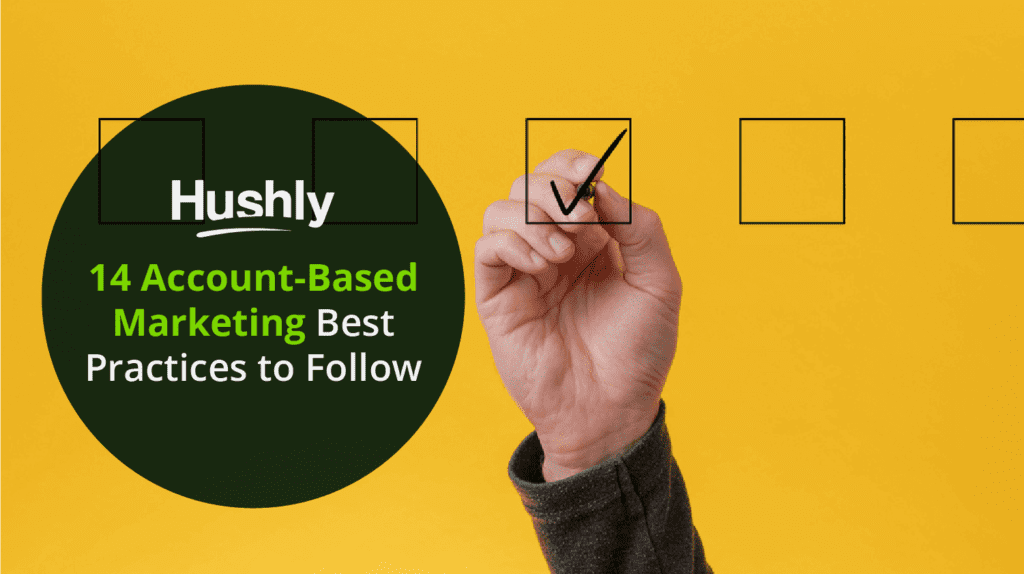Filters
Content Type
Topic
3 Types of Account-Based Marketing
Account-based marketing, also known as ABM, is a hot topic in the marketing world. This is because your best customers deserve your full attention. At the very least, they need to feel like they can rely on you to understand their business perspective and how best to help them achieve their goals.
The best way to achieve this mutual understanding is by demonstrating your value upfront with the three types of account-based marketing strategies. As the entire industry shifts toward a more human-centered approach to marketing, designing personalized marketing materials for important accounts will soon become a requirement.
Before you get started designing your own ABM campaigns, you should know some of the basics, like the three main types of account-based marketing and how to use them. We’ll also include some key tips on how you can use automation to develop and scale your ABM efforts.

What is B2B Account-Based Marketing?
B2B account-based marketing is a form of marketing that relies on tailoring your efforts toward specific accounts or buyers. In other words, rather than designing marketing materials for mass appeal to a wide audience, you’ll focus instead on delivering the right message to the right buyer in the hopes of securing larger deals and long-lasting relationships.
Account-based marketing doesn’t just need to be on a one-to-one basis, as we’ll discuss later. Instead, there are multiple great ways to design ABM strategies that will work no matter the scale you’re operating at.
What are the Components of Account-Based Marketing?
There’s no right way to do ABM, so the components of your program could end up looking different than what we describe in today’s article.
However, to get you started on the right path, here are a few components we believe every ABM campaign should include:
- Targets that are chosen deliberately by using buyer personas or industry insights
- Marketing materials that seek to address specific and unique pain points on a per-business basis
- Automated, self-updating marketing that will vary based on who is viewing it
- A personalized approach that aims to establish long-term relationships based on trust and understanding, rather than aiming for a one-off sale
What is an Account-Based Marketing Strategy?
Account-based marketing strategy varies from traditional marketing in the following ways:
- Instead of aiming for mass awareness, top-of-funnel ABM advertising can focus on building rapport and trust from the outset of communications.
- Account-based marketing is more involved on a per-customer basis than traditional marketing. You’ll need to put in the work to maintain the relationships you create.
- Since ABM is aimed at developing long-term relationships with buyers, you will spend more time creating marketing strategies that appeal to your existing customers. This means thinking of ways to upsell and keep those customers happy through service and support.
What is an Example of Account-Based Marketing?
Using automation and a commitment to personalization are two key examples of account-based marketing that any business can use and succeed with.
TechTarget came to Hushly looking for a way to automate their targeted marketing materials on a bigger scale. TechTarget’s business was based on creating unique advertising and educational materials that spoke to customers on a personal level, which on its own is a perfect example of account-based marketing.
TechTarget knew they needed a way to scale these efforts, however. At a certain point of growth, it becomes more and more difficult to keep designing 1:1 ABM for each new customer without the help of automation. That’s where Hushly came in to streamline the ABM process.
What are the Types of Account-Based Marketing?
Now that you have a foothold in the basic account-based marketing framework, here are three different account-based marketing examples you can use to start targeting buyers today.
1. One-to-One ABM
One-to-one (1:1) is the form of account-based marketing where you design all marketing materials and sales pitches for an individual customer. Given the level of detail you can generate when you’re working with just a single customer, one-to-one marketing is best for the largest clients that you want to make the biggest impression on.
One-to-one ABM works by isolating your ideal customer from the outset. You can do this in many ways, the simplest of these is creating a customer or buyer persona.
You can create a buyer persona based on an ideal but fictionalized business or focus on a real-world example and try to build a persona based on details you already have. For example, who at the business is responsible for buying decisions? What does this person do within their company, and how can you best communicate your vision with them?
Once you’ve got your persona, your marketing and sales teams will be responsible for developing the account from the ground up. This can include everything from how you will orchestrate first contact to what additional items you’ll try to sell to the buyer persona after they become a customer.
2. One-to-Few ABM
In one-to-few (1:few) ABM, you’ll design marketing and sales pitches for multiple businesses at once. Multiple in this case generally means few enough that a highly personalized pitch can be made to each one, without necessarily devoting the time or effort to create any 1:1 pitches.
One-to-few is a good strategy for targeting between 5 and 10 medium-sized businesses that occupy the same niche. These businesses may be competitors, and that’s a good way to tell if they’ll each benefit from your product.
Construct 1:few marketing materials based on the customer’s needs and pain points rather than any specific personal pitches. If you’ve chosen your targets wisely, each of these businesses should be suffering from the same problems that you can offer solutions to. Designing sales and marketing materials that conjure this pain and promise to remedy it’s the best way to conduct 1:few ABM efforts.
3. One-to-Many ABM
Here, you’ll develop marketing and sales pitches that double as mass appeal efforts. One-to-many (1:many) is a great way to design personalized, top-of-funnel marketing materials that still appeal to many businesses in your niche.
Similar to 1:few marketing, you’ll want to personalize your treatment of each account as much as possible while still reserving resources for other marketing efforts. The companies in your 1:many ABM strategies are ones that you’re eager to work with but aren’t willing to invest a heavy amount of time on individual marketing.
One-to-many ABM is challenging if you’re working without the use of account-based marketing platforms like Hushly.
How Hushly Can Automate Your ABM at Any Scale
Hushly specializes in account-based marketing automation which can help your business grow regardless of its current scale. From 1:1 to 1:many ABM, Hushly has account-based marketing tools that can help:
- Design personalized, dynamic webpages for potential clients with just a few clicks.
- Organize automated content hubs that present marketing materials that address any pain points or industry challenges to the right prospects.
- Create and nurture new leads with proven lead capture forms and techniques that will draw the attention of any business you hope to work with.
- Keep track of lead data from start to finish.
At Hushly, we understand that marketing is never fully optimized. You must take small steps with each new iteration to come closer to the ideal. The best way to achieve this is by tracking data and constantly refining your process.
Let’s talk about how Hushly can improve your automated ABM efforts. Request a demo today.
The post 3 Types of Account-Based Marketing appeared first on Hushly.



